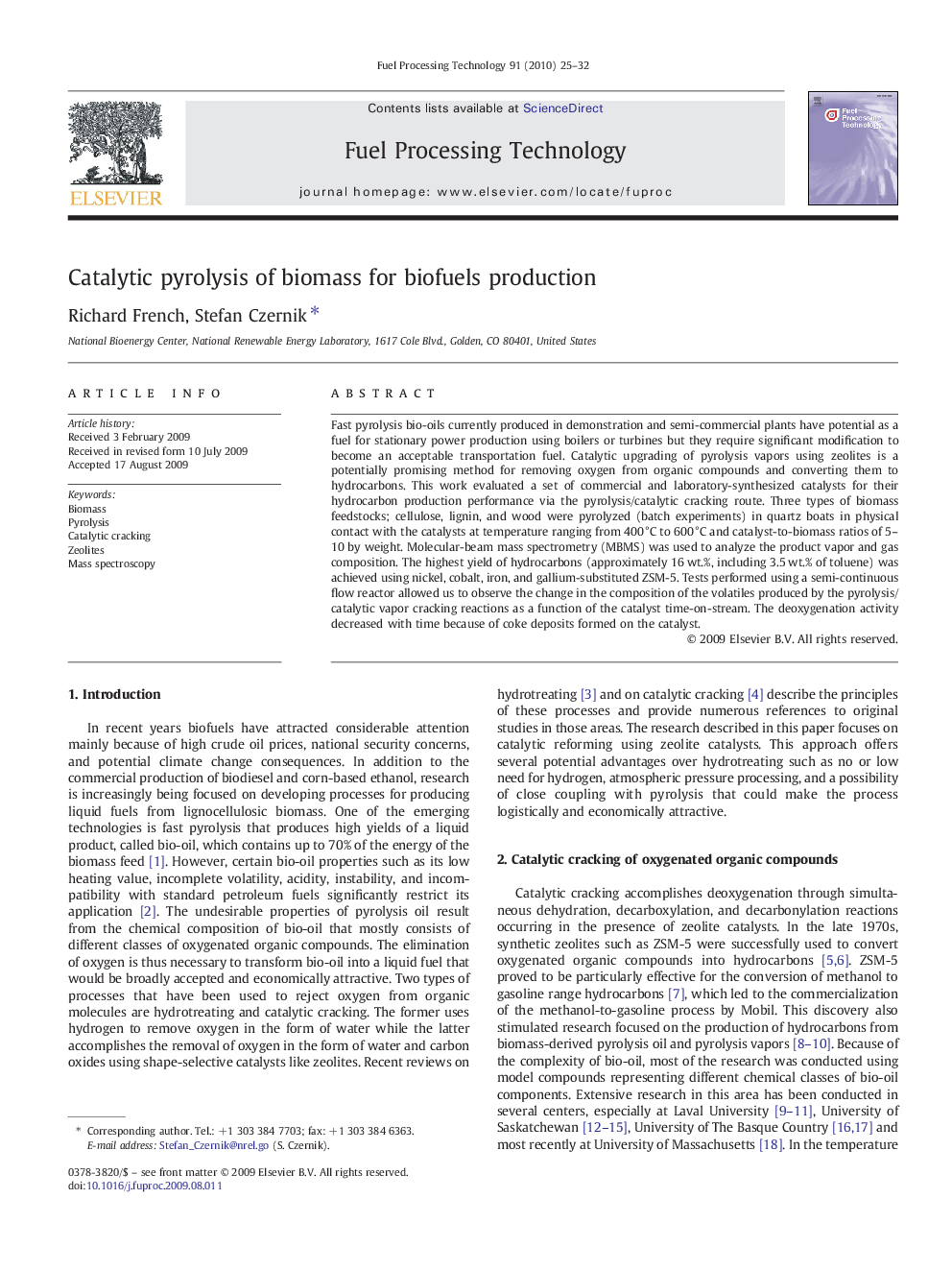| Article ID | Journal | Published Year | Pages | File Type |
|---|---|---|---|---|
| 211197 | Fuel Processing Technology | 2010 | 8 Pages |
Fast pyrolysis bio-oils currently produced in demonstration and semi-commercial plants have potential as a fuel for stationary power production using boilers or turbines but they require significant modification to become an acceptable transportation fuel. Catalytic upgrading of pyrolysis vapors using zeolites is a potentially promising method for removing oxygen from organic compounds and converting them to hydrocarbons. This work evaluated a set of commercial and laboratory-synthesized catalysts for their hydrocarbon production performance via the pyrolysis/catalytic cracking route. Three types of biomass feedstocks; cellulose, lignin, and wood were pyrolyzed (batch experiments) in quartz boats in physical contact with the catalysts at temperature ranging from 400 °C to 600 °C and catalyst-to-biomass ratios of 5–10 by weight. Molecular-beam mass spectrometry (MBMS) was used to analyze the product vapor and gas composition. The highest yield of hydrocarbons (approximately 16 wt.%, including 3.5 wt.% of toluene) was achieved using nickel, cobalt, iron, and gallium-substituted ZSM-5. Tests performed using a semi-continuous flow reactor allowed us to observe the change in the composition of the volatiles produced by the pyrolysis/catalytic vapor cracking reactions as a function of the catalyst time-on-stream. The deoxygenation activity decreased with time because of coke deposits formed on the catalyst.
